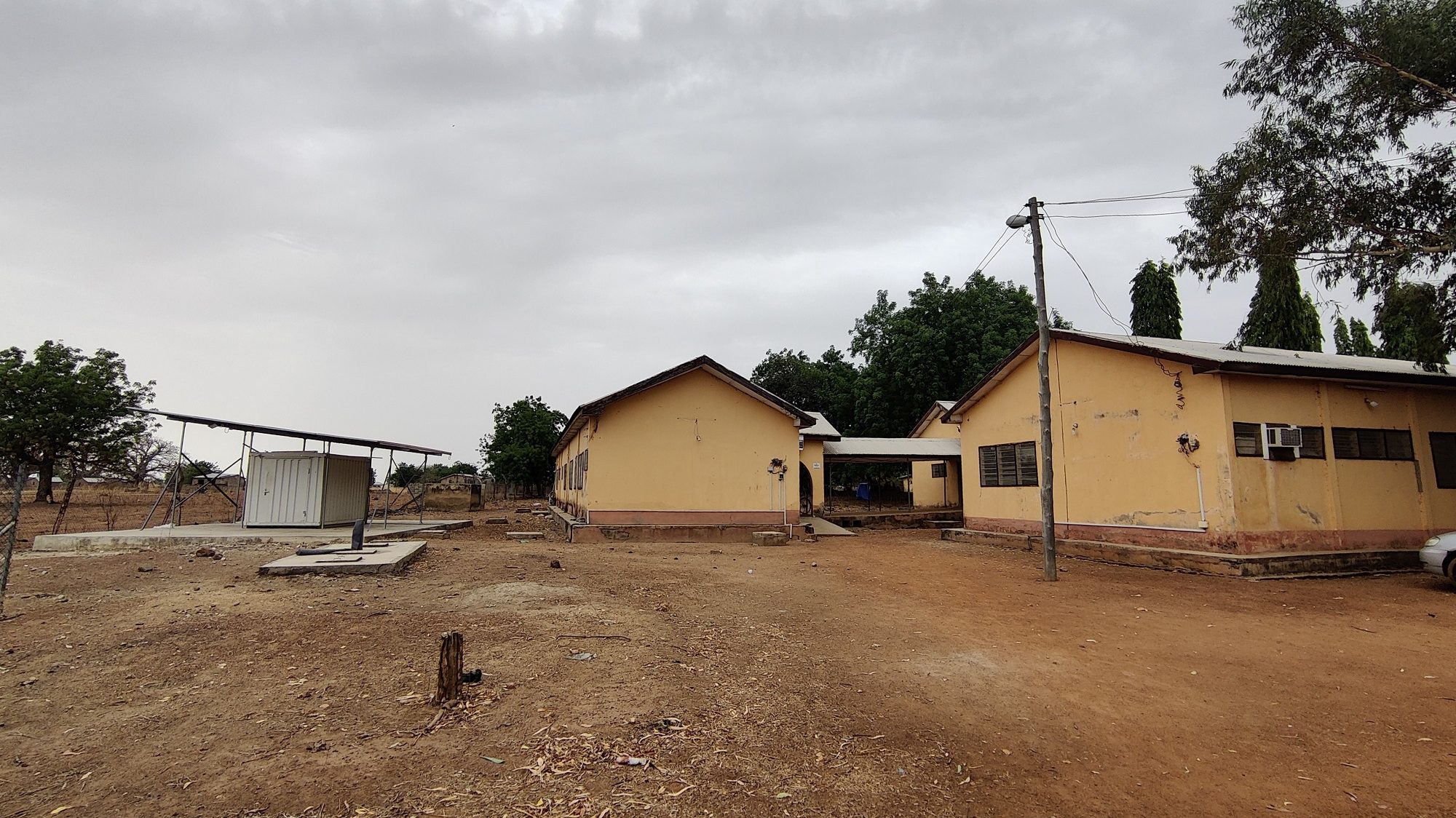
Access to electricity
In 2019, 770 million people were without access to electricity globally[1]. They are left without the possibility of using electric light at night, powering refrigerators and stoves, or charging their phones and other devices. Until 2019, the number constantly decreased but the Covid-19 pandemic reversed the trend. In its World Energy Outlook 2021 report, the International Energy Agency (IEA) predicts that between 2019 and 2021 the global number of people without access to electricity stuck at its pre-crisis level – after seeing improvements by around 9% annually since 2015[2]. In Sub-Saharan Africa (SSA), for the first time since 2013, the numbers are likely to have even increased in 2020.
The SDGs and energy access
In 2015, 193 UN member states adopted the 2030 development agenda, defining 17 goals for a sustainable transformation of our world – the sustainable development goals (SDGs). Since then, the SDGs are a call for action to enhance people’s lives while at the same time preserving our planet and tackling climate change. One of them is SDG 7, which aims to “ensure access to affordable, reliable, sustainable and modern energy for all”[3]. Achieving this goal until 2030 would need a massive push with 100 million people being connected annually and investments of over USD 25 billion[4]. While countries in Asia – especially India – are adequately on track to achieve universal access to energy, many countries in SSA struggle to reach the goal. Here, the IEA predicts that the access rate will only reach 60% by 2030.
The SDGs and health
While the decline in access to electricity is an interlinked side-effect of the pandemic[5], health care aspects are in the spotlight. Here, SDG 3 is focusing on ensuring “healthy lives and promote well-being for all at all ages[6]. Worldwide large inequalities in health status and access to health exist. For example, life expectancies range from an average of only 63 years in lower income countries to an average of about 80 years in high income countries.[7] The outbreak of Covid-19 vividly demonstrated the need of achieving this goal and drastically highlighted the interconnectedness of our world but also the health injustice when looking at aspects such as vaccine distribution. Furthermore, it underlines the essentialism of adequate health infrastructure to provide care for those in need. An essential part of this infrastructure is electricity. Especially in rural areas in SSA, health facilities have by no means stable energy supply in many cases. Today, UN Development predicts that 25% of health facilities are without access to electricity at all while 28% face regular power outages in this region of the world[8].
Off-grid energy systems
Connecting rural health facilities in SSA to the grid requires large-scale investments many developing countries struggle to make. Therefore, many initiatives and research projects aim to enhance electricity access by installing off-grid energy systems as less cost-intensive alternative. But what are off-grid energy systems? These systems don’t have any connection to the national grid but are standalone entities that solely rely on a solar panel or wind generator to produce electricity[9]. The produced energy is either directly distributed to consuming devices or prestored in batteries to ensure electricity supply when no sun is shining, or wind is blowing. In SSA, single solar panels became a common sight in rural areas, but also bigger systems were installed. These can encompass several solar panels, multiple batteries, and a diesel generator as a backup, to power bigger facilities.
The connection between energy access and healthcare delivery
But how is energy and health interconnected? The World Health Organization (WHO) acknowledges that access to clean, affordable, and reliable energy remains very important in the quest to attain universal health coverage[10]. However, as mentioned above, in many developing countries access to modern energy services tends to be very limited particularly in rural, remote and island communities. In these settings, off-grid systems are fast becoming a potential game changer especially for healthcare delivery. If well maintained, such systems have the potential to provide the required energy needed to enhance access and improve the overall quality of healthcare services provided.
For example, off-grid systems can provide electricity for lighting thereby enabling health facilities to operate for longer hours and provide night-time care for patients. Electricity provision via off-grid systems can also enable the use of modern medical equipment for both diagnosis and treatment of diseases. Essential medical suppliers such as vaccines, blood and medicines can as well be stored and preserved under regulated temperatures to ensure longevity. The energy needed for the sterilization and disinfection of medical devices on the one hand and the safe disposal of medical waste on the other can also be provided by off-grid systems. Furthermore, electricity from off-grid systems can also enhance the use of information and communication technology (ICT) devices and applications in healthcare delivery and serve as a motivation to attract and retain healthcare workers in rural communities.
Although the potential benefits of off-grid systems for health facilities are enormous, such systems usually entail some initial investment cost by facility owners. To facilitate the adoption of these systems, there are many calls for evidence that demonstrate these potential benefits beyond the rhetoric. One example of a research and development project that seeks to unearth how off-grid systems may contribute to stable and reliable supply of energy for health facilities in a developing country context is the EnerSHelF project.
The EnerSHelF project: providing evidence that matters for decision making
The Energy Self-sufficiency for Healthcare Facilities in Ghana project (EnerSHelF) is a research and development project that aims at contributing towards SDG 3 as well as SDG 7 by providing context-sensitive and sustainable technological energy solutions for health facilities in Ghana and improving the reliability of off-grid photovoltaic hybrid energy systems.
The project comprises of an interdisciplinary team of Ghanaian and German scientists from engineering and economics as well as private sector partners from Germany and Ghana. By working collaboratively and adapting an interdisciplinary approach, the project will provide first hand evidence regarding the potential benefits of off-grid PV systems for healthcare delivery in Ghana, policy recommendations to strengthen governance structures in the energy and health sectors, an effort to promote the diffusion of solar PV solutions in Ghana, and a strategy to enhance the integration of such systems in the local energy system. Finally, to enhance the uptake of project results, a process of evidence-based learning with national and international stakeholders from the research, political and practitioner community will be initiated. By doing this, the project will be providing evidence that matters for decision making.
Authors
Callistus Agbaam is a Research Fellow at the International Centre for Sustainable Development (IZNE), Bonn-Rhein-Sieg University of Applied Sciences, Sankt Augustin. He is also in the final stages of his PhD studies in International Development at Ruhr University Bochum. He holds two masters degrees: M.A. in Development Studies from University of the Western Cape, Cape Town, South Africa and M.A. in Development Management from the Institute of Development Research and Development Policy, Ruhr University Bochum, Germany. His research interest includes social protection, poverty and health equity, political economy, sustainability and inclusive development.
Jonas Bauhof is a research assistant at the International Centre for Sustainable Development (IZNE), Bonn-Rhein-Sieg University of Applied Sciences, Sankt Augustin. He also works as a project assistant at the European Association of Development Research and Training Institutes. He holds a M.Sc. in Global Development from Copenhagen University and a B.A. in European Studies from University of Bremen.
[1] International Energy Agency: https://www.iea.org/reports/sdg7-data-and-projections/access-to-electricity
[2] International Energy Agency: https://www.iea.org/reports/world-energy-outlook-2021
[3] UNIRIC – Regionales Informationszentrum der Vereinten Nationen: https://unric.org/de/17ziele/
[4] International Energy Agency: https://www.iea.org/reports/world-energy-outlook-2021
[5] International Energy Agency: https://www.iea.org/topics/energy-access
[6] UNIRIC – Regionales Informationszentrum der Vereinten Nationen: https://unric.org/de/17ziele/
[7] World Bank Development Indicators/ Health Nutrition and Population Statistics
[8] United Nations Development Programme: https://undp-climate.exposure.co/3-ways-solar-energy-powers-the-fight-against-covid19
[9] Renewables in Africa: On-Grid vs Off-Grid: What is the difference? https://www.renewablesinafrica.com/on-grid-vs-off-grid-what-is-the-difference/
[10] WHO (2014). Access to modern energy services for health facilities in resource-constrained settings: a review of status, significance, challenges and measurement. Geneva: World Health Organization.

